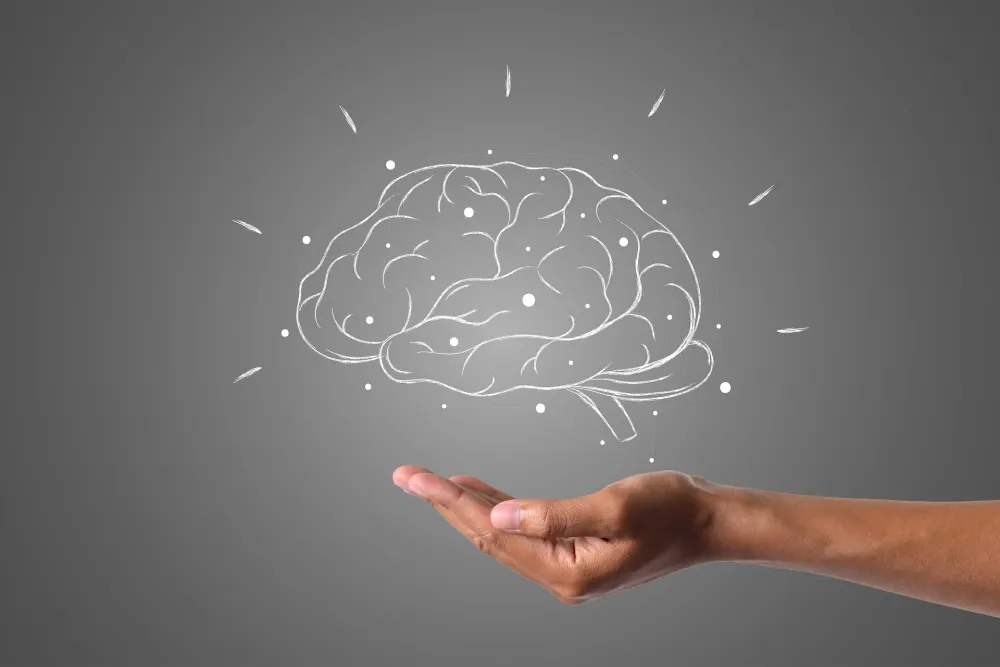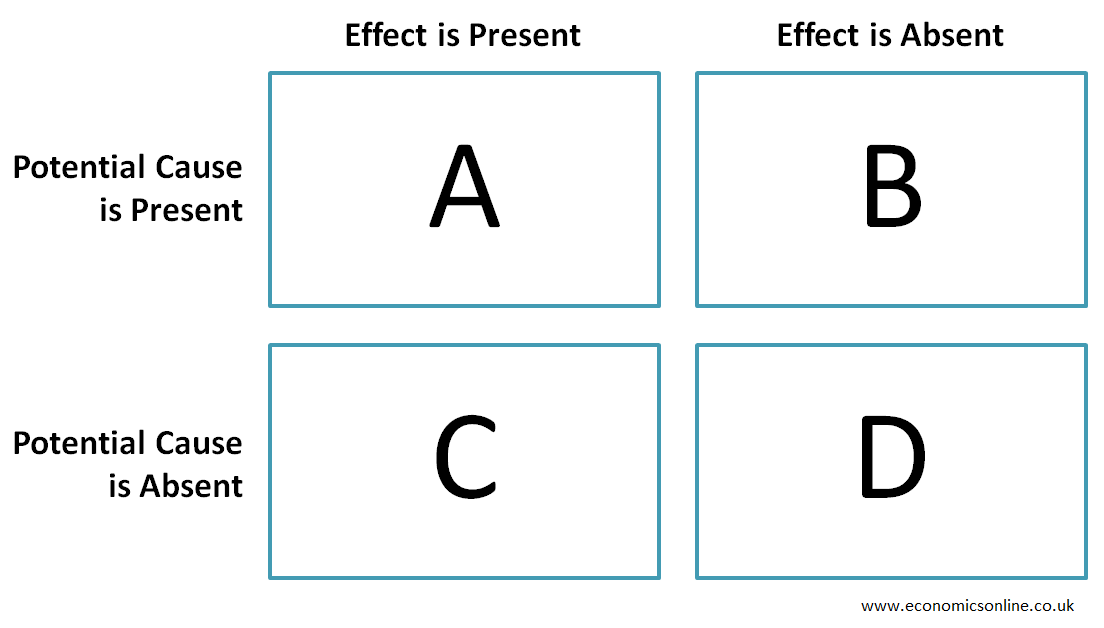
An image showing human brain.
Illusory Correlation
What is an Illusory Correlation?
Illusory correlation is a cognitive bias that causes human beings to perceive a relationship between two variables that doesn’t actually exist. This phenomenon arises when two unrelated events occur together, leading people to believe that they are causally related.
For example, someone may believe that carrying an umbrella causes it to rain because they only use an umbrella when it rains. However, this is an illusory correlation because there is no causal relationship between carrying an umbrella and rain.
Other examples can be:
- When I wash my car, it rains.
- Couples who adopt a child are more likely to conceive.
- When a black cat crosses a person’s path, misfortunes happen.
- When I buy a lottery ticket on my birthday, I win.
- Full moon can cause epilepsy or other mental disorders.
The Origin of the Illusory Correlation
The term “illusory correlation” was first coined by US psychologists Loren J. Chapman and Jean Chapman in 1967. They noticed that people sometimes create a connection between two things that may not be related at all simply because they occur together in their minds. Hamilton and Rose (1980) found that stereotypes can lead people to expect certain groups and traits to fit together, and then they overestimate the frequency with which these correlations actually occur. The phenomenon of illusory correlation has been extensively studied and has provided insight into how our brains process information and make associations. This has also helped in understanding human behavior.
Understanding the Illusory Correlation
Human brains are wired to recognise patterns and associations. However, sometimes human brains can create associations that don't actually exist. This phenomenon is called the "illusory correlation." We create a link between an effect and a potential cause that may not be there, simply because they occur together in our minds. By understanding the concept of the illusory correlation, we can become more aware of how our brains work and avoid making decisions based on false assumptions.
To understand the concept of illusory correlation, let’s take an example by assuming that a black cat has crossed Mr. X’s path and a misfortune has happened. Mr. X has developed an illusory correlation in his mind that crossing of a black cat is a bad omen and it causes misfortunes.
Now let’s consider the following table, which shows boxes representing four possible scenarios.

Box A: The effect (misfortune) is present, and the potential cause (black cat crossing the path) is also present. This is when Mr. X is most likely to create an illusory correlation. Mr. X remembers the time when he faced a misfortune when a black cat crossed his path.
Box B: The effect (misfortune) is absent, and the potential cause (black cat crossing the path) is present. The effect is not present, so Mr. X will not spend time trying to find an explanation. This is a non-event, and Mr. X will not remember it.
Box C: The effect (misfortune) is present, and the potential cause (black cat crossing the path) is absent. Mr. X will ignore this occurrence because there is no easily available information that would help him create a correlation.
Box D: The effect (misfortune) is absent, and the potential cause (black cat crossing the path) is also absent. Mr. X will ignore this because things are going smoothly.
Now Mr. X has fallen into Box A and has developed the illusory correlation that whenever a black cat crosses his path, misfortunes will occur. This illusory correlation was based on Mr. X's personal experience, yet people may develop it based on various factors, like a news story from media or experience of others.

The issue is that illusory correlations can drive many of the decisions made by Mr. X. Whenever a black cat crosses Mr. X’s path, he will be fearful of possible misfortunes and will cancel the plan, may it be travel, investment, or anything else. This will hamper the decision-making of Mr. X, and the outcomes may be suboptimal.
Causes of Illusory Correlation
There are several causes of illusory correlation, including:
Selective Attention
The first common cause of illusory correlation is selective attention. People tend to pay more attention to events that confirm their existing beliefs and ignore those that do not. This selective attention can lead to the perception of a correlation between two unrelated variables.
The Availability Bias
The second cause of illusory correlation is availability bias, which is a mental shortcut that people use to make judgements based on how easily they can bring something to mind. If someone has recently experienced two unrelated events that occurred together, they may perceive a correlation between them because these events are more easily recalled.
The Confirmation Bias
The confirmation bias can also contribute to an illusory correlation. Confirmation bias is the tendency to seek out information that confirms one's beliefs and ignore information that contradicts them. This bias can lead people to see correlations that are not true in the real world.
Examples of the Illusory Correlation
Stereotyping
Illusory correlations can lead to stereotyping and prejudice. For example, if a person believes that all members of a certain group are lazy, they may overestimate the number of lazy behaviours exhibited by members of that group and under-report instances of hard work or productivity.
Superstitions
Another example of the illusory correlation can be seen in superstitions. People may start to believe that certain events or actions bring good or bad luck, even if there is no evidence to support this hypothesis. For instance, a sports fan may believe that wearing a particular shirt or hat will help their team win, even though this is not the case.
Advertising
Advertisers often use the illusory correlation to their advantage by associating their products with positive outcomes, even if there is no real connection. For example, a company may use images of happy families in their advertisements to make consumers associate their products with happiness and contentment.
Impact of Illusory Correlation on Economic Decision-Making
In economics, correlation plays a significant role in analysing data and making informed decisions. Illusory correlation effects can lead to biases in decision-making, affecting everything from marketing strategies to policy decisions.
Below are a few examples of how illusory correlation can hamper decision making in economic contexts.
Investment
An investor may overestimate the potential of a certain stock based on a pattern they think they see, but that pattern may not actually exist. This can lead to poor investment decisions and financial losses.
Hiring
Similarly, a business owner may make hiring or promotion decisions based on false correlations between certain traits or behaviours and job performance, leading to discrimination and a less diverse workforce.
Advertising
A company believes that its advertising campaign is effective because sales increase during it. However, this may be an illusory correlation because sales may increase for reasons unrelated to the advertising campaign, such as seasonal demand.
Taxation
A policymaker believes that increasing taxes on luxury goods will decrease demand for these goods. However, this may be an illusory correlation because the decrease in demand may be due to other factors, such as a decrease in disposable income.
Avoiding the Illusory Correlation
The illusory correlation can be avoided by approaching the decisions with a critical mindset, questioning assumptions, and seeking out alternative explanations. It can also be helpful to seek out diverse perspectives and consider multiple sources of information before making a decision.
Conclusion
Illusory correlation, like other cognitive biases, can have significant impacts on decision-making in economics and can lead to discrimination and other negative outcomes. This bias occurs when people perceive a relationship between two variables when there is none. Selective attention, the availability heuristic, and confirmation bias all contribute to the development of illusory correlation. To avoid this bias, decision-makers should critically evaluate the data and consider alternative explanations for apparent correlations. By doing so, they can make better judgment, make more informed decisions, and avoid the pitfalls of illusory correlation.

